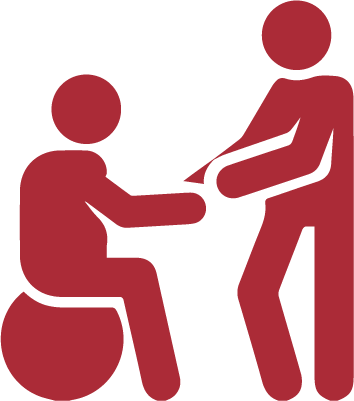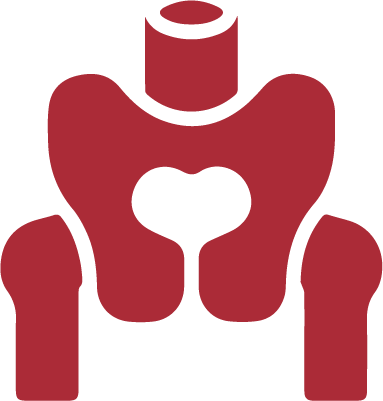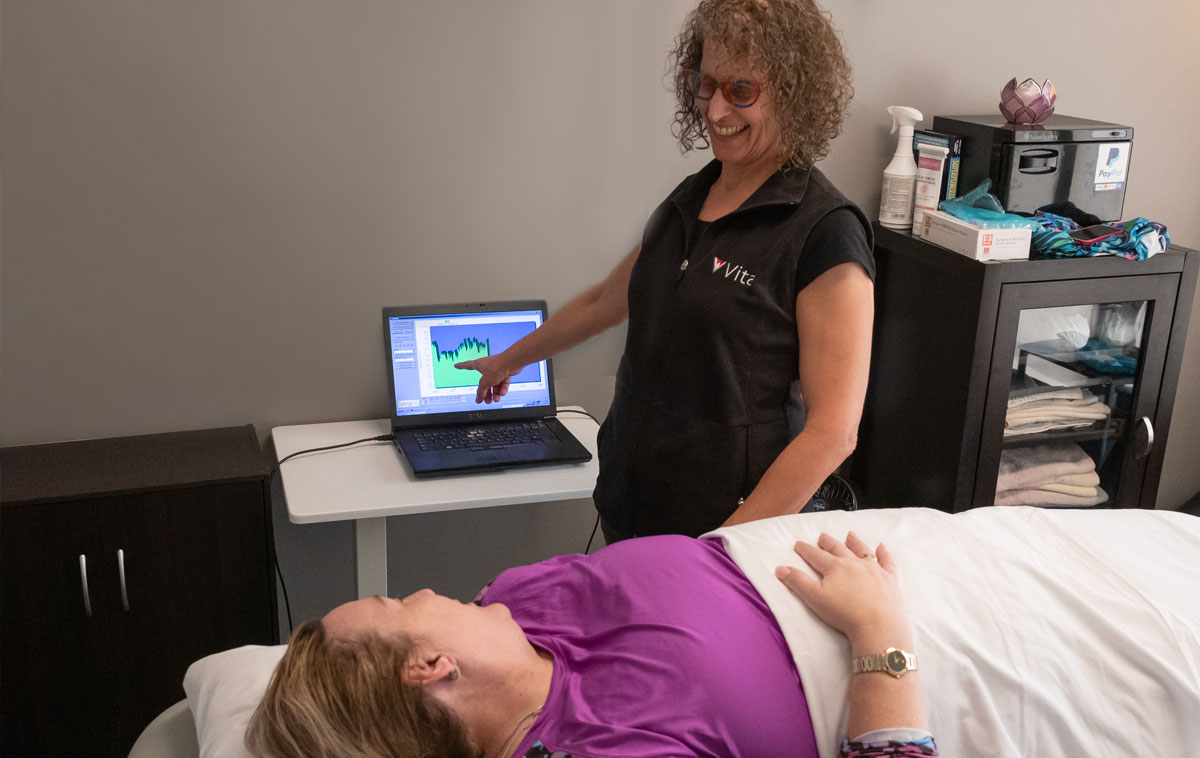Pelvic and Abdominal Pain
Abdominal pain occurs between the chest and groin, also called the belly. In contrast, pelvic pain occurs in the lowest portion of the abdomen (below the belly button) and the pelvis. Pain in these areas can be sharp or dull, constant or intermittent, and mild, moderate, or severe. Pain that occurs suddenly and goes away quickly is acute, and pain that lasts six months or longer is chronic.
While our physical therapists will treat your abdominal and pelvic pain, they will also identify the cause of your discomfort and provide you with solutions to prevent the condition in the future.

ABDOMINAL PAIN Conditions
- Abdominal aortic aneurysm
- Appendicitis
- Bowel blockage
- Cancer of the stomach, liver, or other organs
- Cholecystitis, with or without gallstones
- Constipation
- Diverticulitis
- Food allergies or food poisoning
- Gastroesophageal reflux disease (GERD), heartburn, or indigestion
- Inflammatory bowel disease (IBD), including Crohn’s disease and ulcerative colitis
- Interstitial cystitis
- Irritable bowel syndrome (IBS)
- Kidney stones
- Pancreatitis
- Stomach flu
- Ulcers
PELVIC PAIN conditions
- Endometriosis, ovarian cysts, uterine fibroids, and other gynecologic conditions
- Cancers of the colon, ovaries, or other organs
- Hernias
- Painful periods and heavy bleeding
- Pelvic floor disorders
- Pelvic inflammatory disease (PID)
- Prostatitis and other prostate diseases
- Testicular and urologic disorders
- Ulcerative colitis
- Urinary tract infections
Treatments
FMS (Functional Movement Screen)

Pain Management
Our pain management services include a range of therapies, such as medication management, physical therapy, acupuncture, massage therapy, and other complementary techniques. Our team of licensed healthcare professionals works closely with each patient to develop a personalized treatment plan.

Physical Therapy
Our physical therapy services include personalized rehabilitation treatment plans designed to address each individual’s unique needs, goals, and challenges.

Biofeedback
Biofeedback isn’t painful and helps over 75% of people with pelvic floor dysfunction. Debbie Callif, OT will attach special sensors to monitor your pelvic floor muscles as you try to relax or clench them. This allows Debbie to determine which muscles in your lower back, pelvis, and pelvic floor are really tight and teach you exercises to stretch these muscles so their coordination can be improved.

Pelvic Floor Therapy
Pelvic Floor Strengthening Therapy is a form of specialized physical therapy focused on the muscles and tissues of the pelvic region. While pelvic floor pain, weakness, or dysfunction (PFD) is common among both men and women, our therapist, Debbie Callif, OT is highly trained and has treated thousands of patients with PFD.

Dry Needling
Medical Guided Fitness
Assisted Stretching

Life & health coaching
So often, pelvic floor weakness or dysfunction isn’t just a “mechanical” failure of our body’s abilities. It can often be exacerbated by mental stress and other environmental triggers. Debbie works with each patient to identify these factors and leverage additional therapies like Breathwork, Mindfulness, Relaxation, Imagery, and EFT (Emotional Freedom Techniques) throughout your treatment.

Yes, that's true
Most insurance companies now permit you to get evaluated and treated by a licensed physical therapist without needing a referral or prescription from your doctor.
Check your health insurance plan for more details, or Contact us directly if you have any concerns about your physical health so that we help you get back to feeling your best!

Therapy focused on and for you!
Our ultimate goal is to help you not only feel better physically but also to ensure that you feel comfortable and actively involved in your therapy treatment. Our team of experienced clinicians will work closely with you to understand the root causes of your injury or condition and develop a personalized treatment plan to help you recover and maintain optimal health.
We recognize that each patient is unique and requires a tailored approach to their therapy.
Our team will work closely with you to set realistic goals and milestones and continually monitor your progress to ensure that you are on the right track to recovery. We will also provide you with exercises and education to empower you to take control of your recovery and maintain your health for the long term.
